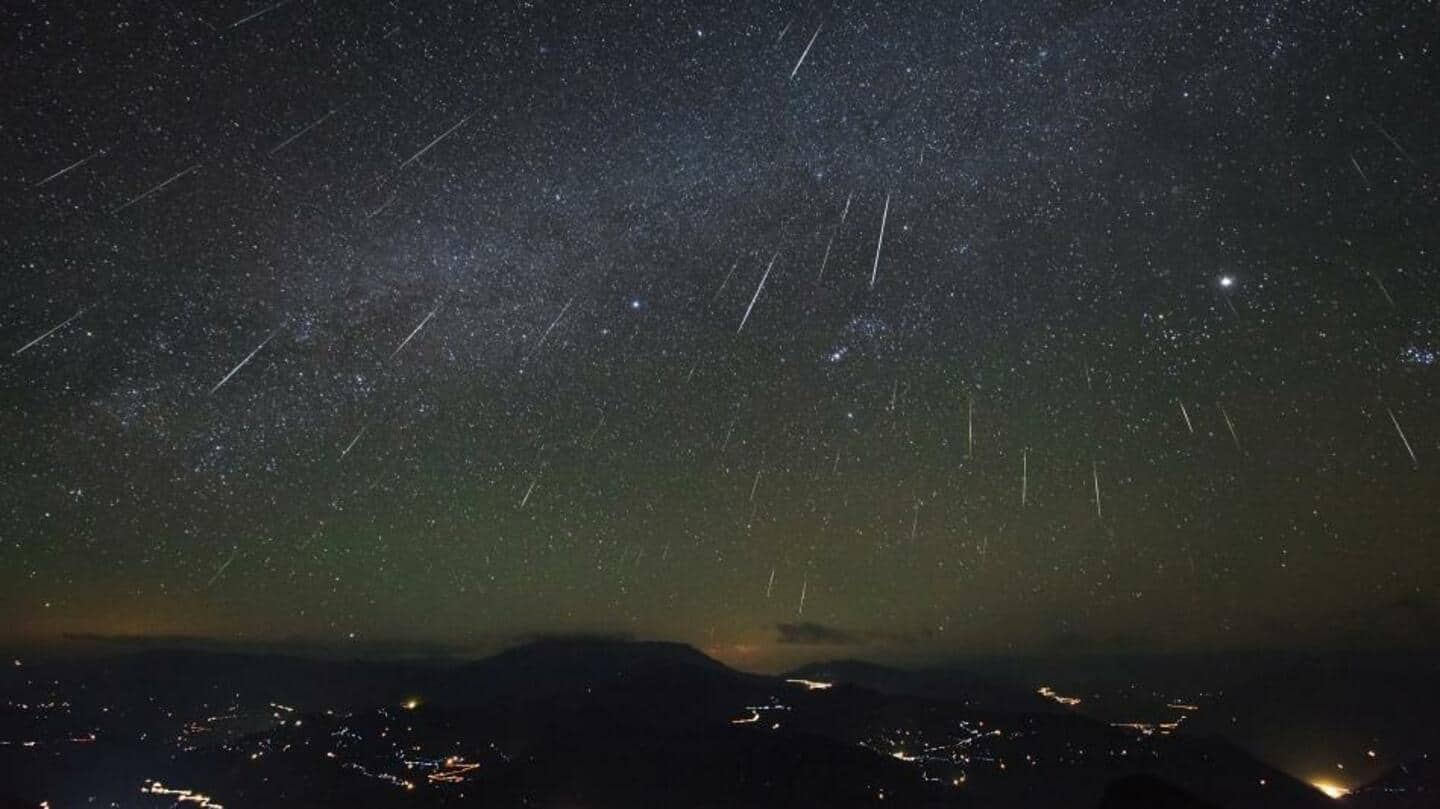
Geminid meteor shower 2022: Where and how to watch?
What's the story
The Geminid meteor shower is considered to be one of the best annual meteor showers. The bright and fast meteors often appear to be yellowish.
The meteor shower commenced on November 19 and will go on till December 24. It will peak on December 14.
Under optimal viewing conditions, around 120 meteors can be spotted per hour.
Context
Why does this story matter?
The Geminid meteor shower started appearing in the mid-1800s.
The parent body of most meteor showers are comets but Geminids originate from an Asteroid, called 3200 Phaethon.
It is a small Earth-crossing asteroid, which means that its path around the Sun intersects with the Earth's orbit and does not have the usual features of comets, such as a nebulous head or a long tail.
Origin
Asteroid 3200 is considered a "dead comet"
Asteroid 3200 Phaethon was discovered in 1985. The space rock measures 5.1km in width and takes about 1.4 years to orbit the Sun.
Researchers consider Phaethon a "dead comet," the burnt remnant of a comet that was once active. Usually, asteroids have a circular trajectory around the Sun but Phaethon has a comet-like elliptical orbit which further confirms the long-standing theory.
Details
Geminid meteor shower peaks during mid-December every year
The Geminid meteor shower originates from the constellation Gemini, located in the northern celestial hemisphere. Viewers are advised not to focus on the constellation alone as the showers will be visible across the night sky.
The meteor shower is currently active and will proceed until December 24. It will peak on December 14 and approximately 120 meteors can be seen per hour.
Instructions
How to watch the Geminid meteor shower?
The Geminid meteor shower starts around 9-10 pm and will continue till dawn.
It is best visible in the Northern Hemisphere but can also be spotted from the Southern Hemisphere.
Find a dark/dim area away from any light source.
Recline comfortably with your feet pointing southward.
Allow at least 30 minutes to pass for your eyes to adapt to the night sky.